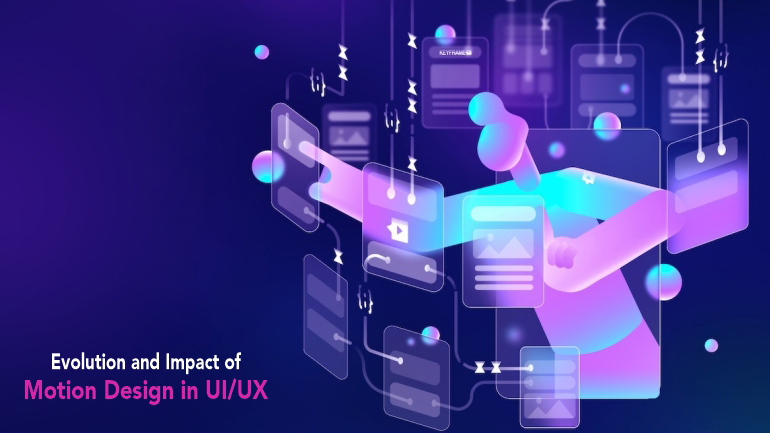Motion Design: A Transformative Force in UI/UX Design
In today's fast-paced digital world, UI/UX design plays a pivotal role in creating engaging and intuitive user experiences. And within the realm of UI/UX design, motion design has emerged as a powerful tool to captivate and guide users through digital interfaces. So, let's delve into the evolution of motion design and how it has revolutionized the way we interact with technology.
A Brief History: From Static to Dynamic Interfaces
Gone are the days of static interfaces with stagnant elements. With the advent of motion design, UI/UX designers now have the ability to breathe life into their creations, giving users a sense of dynamism and fluid interaction. The journey of motion design can be traced back to the early days of industrial design, where physical objects were crafted to communicate meaning through movement.
The Emergence of Motion Design in UI/UX
The early stages of motion design in UI/UX took cues from traditional animation principles, such as timing, easing, and anticipation. Gradually, it became apparent that motion could be utilized not only to enhance aesthetic appeal, but also to convey information, clarify navigation, and guide users seamlessly through digital experiences.
Enhancing User Engagement through Microinteractions
Microinteractions, the subtle animations and feedback that occur in response to user actions, have become an integral part of motion design in UI/UX. They add a layer of delight and interactivity, making the overall experience more engaging. Whether it's a button changing color on hover or a loading spinner indicating progress, these microinteractions provide valuable feedback to users, improving their understanding and perception of the interface. here you go for ui ux design agency in dubai.
Improving Visual Hierarchy and Information Processing
Motion design has transformed the way we perceive and process information in digital interfaces. It has opened up avenues to establish a clear visual hierarchy, guiding users' attention to key elements and functionality. By strategically incorporating motion, designers can create seamless transitions, highlight important content, and define the flow of information, making the user experience more intuitive and efficient.
Fostering Emotional Connections
One of the most powerful aspects of motion design is its ability to evoke emotions and create connections with users. By carefully choreographing animations and transitions, UI/UX designers can imbue interfaces with personality and charm. Whether it's a playful bouncing effect or a smooth page transition, these subtle details can leave a lasting impact on users, fostering a sense of delight and affinity towards the product or brand.
Accessibility and Inclusive Design
Another crucial aspect that motion design brings to the table is its potential to enhance accessibility and inclusive design. Through thoughtful implementation of motion, designers can provide additional visual cues for users with disabilities or impairments, making the interface more inclusive and user-friendly.
The Future of Motion Design in UI/UX
As technology continues to evolve at an unprecedented pace, the future of motion design in UI/UX appears promising. With advancements in machine learning, artificial intelligence, and virtual reality, motion design will play an even greater role in creating highly immersive and interactive experiences. From augmented reality interfaces to gesture-based interactions, the possibilities are endless.
Conclusion
Motion design has undoubtedly revolutionized the field of UI/UX design. It has transcended the boundaries of aesthetics and evolved into a powerful tool for improving user engagement, facilitating information processing, fostering emotional connections, and promoting accessibility. As designers continue to embrace the potential of motion design, we can expect to witness new and innovative ways of enhancing the user experience in the digital realm.
visit megatask web for ui ux design company in dubai.
FAQs
Q1.How has motion design transformed traditional UI/UX interfaces?
A: Motion design has shifted UI/UX from static elements to dynamic, engaging interfaces. It introduces movement, enhancing user experiences by providing a sense of dynamism and fluid interaction.
Q2.What role do microinteractions play in motion design for UI/UX?
A: Microinteractions, subtle animations in response to user actions, are integral to motion design. They add engagement, offering feedback like button color changes or loading spinners, improving user understanding.
Q3.How does motion design contribute to visual hierarchy in UI/UX?
A: Motion design strategically guides attention through visual hierarchy, using transitions to highlight key elements. This enhances the efficiency and intuitiveness of information flow in digital interfaces.
Q4.Can motion design create emotional connections in UI/UX?
A: Yes, motion design can evoke emotions by adding personality to interfaces. Thoughtful animations and transitions, such as playful effects, create a lasting impact, fostering user delight and affinity.
Q5.In what ways does motion design contribute to accessibility in UI/UX?
A: Motion design enhances accessibility by providing visual cues for users with disabilities. Through thoughtful implementation, designers
Categories
- Software Development
- Web Development
- iOS Development
- UI/UX Design
- Web Design
- Digital Marketing
- Graphic Design
- Android Development





